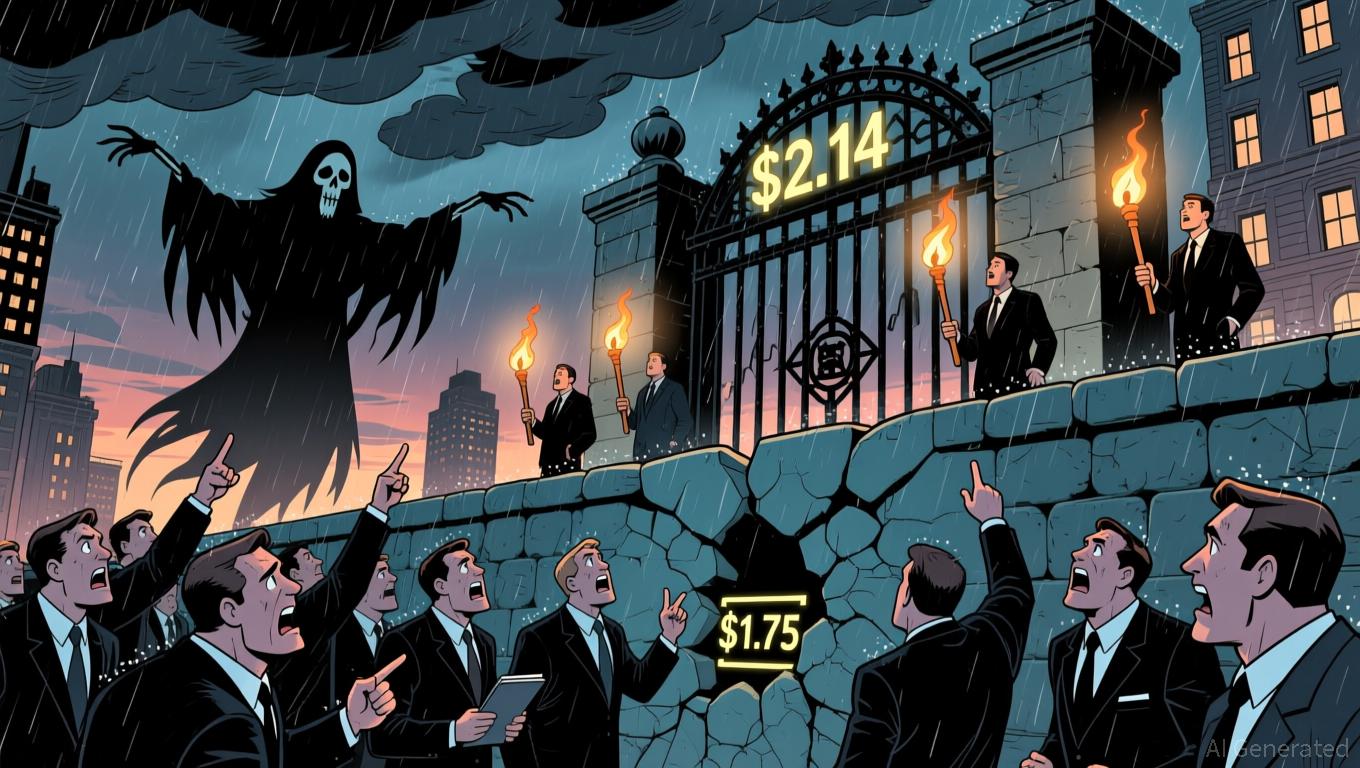XRP News Update: Customized Approaches Boost Stability with Support from Fiber Networks and Credit Unions
- Ripple Fiber secures $350M debt to expand U.S. fiber network, targeting 10 states by 2025 via AI-driven strategies and HyperFiber merger. - Credit unions address economic stress by offering affordable services like zero-down loans and debt consolidation, prioritizing community-focused solutions. - Both initiatives highlight tailored approaches to economic resilience: infrastructure-driven growth and human-centric financial empowerment.
Ripple Fiber, a Charlotte-based company specializing in high-speed fiber internet, has increased its debt facility to $350 million to speed up its national network rollout, as reported by
The company’s executives pointed to their use of AI-powered market analysis and careful capital allocation as crucial factors in their rapid growth. “This expanded debt facility gives us the resources needed to seize the substantial opportunities we’ve identified in our core markets,” said Stuart van der Veen, a Ripple Fiber board member, according to the statement. The recent merger with HyperFiber has unified the company’s assets under a single brand, streamlining operations and accelerating the rollout of advanced fiber networks.

At the same time, credit unions throughout the United States are increasingly serving as crucial financial support systems for Americans facing severe economic pressures, according to
For instance, Vantage West Credit Union in Arizona collaborated with the New Freedom Project to assist people reentering society after incarceration, offering job training and financial literacy programs. In another case, Credit Union 1 in Alaska enabled a member to convert high-interest debt into a manageable home equity line of credit, demonstrating how customized financial strategies can ease stress and promote stability. These initiatives showcase how credit unions can tackle broader issues such as financial illiteracy and the emotional impact of economic hardship, as highlighted by research from Harvard and Ohio State universities and discussed in the article.
The stories of Ripple Fiber’s infrastructure growth and credit unions’ community-based financial assistance illustrate larger trends in economic resilience. While Ripple Fiber is focused on expanding technological access to fuel future development, credit unions prioritize people-centered solutions to address immediate financial needs. Both examples emphasize the value of customized approaches to solving varied economic problems, whether through large-scale infrastructure or local financial empowerment.
Disclaimer: The content of this article solely reflects the author's opinion and does not represent the platform in any capacity. This article is not intended to serve as a reference for making investment decisions.
You may also like
XRP News Update: XRP ETF Buzz vs. Death Cross: Can the $1.75 Support Level Remain Intact?
- XRP faces critical junctures near $2.14 as Grayscale's spot ETF (GXRP) launch looms, with $1.75 support level pivotal for short-term stability. - A death cross pattern raises bearish concerns, suggesting potential 55% price drop to $1 if technical indicators fail to hold. - Institutional crypto products like Leverage Shares' 3x ETFs and 1inch's liquidity pools highlight growing institutional interest amid market volatility. - DeFi struggles with $12B idle capital while projects like Mutuum Finance aim to

Bitcoin Updates: Negative Derivatives Meet Optimistic Institutions as Bitcoin's Future Remains Uncertain
- Bitcoin fell below $85,500 amid bearish derivatives positioning, macroeconomic uncertainty, and dormant wallet sell pressure, with puts dominating calls at $85,000 strike price. - Institutional bulls like Michael Saylor's Strategy reported $2.8B Q3 profits from BTC holdings and pledged continued accumulation during the slump. - The Bitcoin for America Act proposes tax payments in BTC without capital gains liability, aiming to create a Strategic Bitcoin Reserve and modernize U.S. finance. - Derivatives pl

Bitcoin Experiences Sharp Decline as Macroeconomic Conditions Change: The Impact of Increasing Interest Rates and Heightened Regulatory Oversight on Cryptocurrency Values
- Bitcoin's 2025 late-year drop from $126,000 to $80,000 reflects heightened sensitivity to Fed policy shifts and regulatory pressures. - Fed officials like Susan Collins signaled "mildly restrictive" policy, crushing rate cut expectations and triggering 70% decline in December cut odds. - Regulatory crackdowns on crypto mixing and mining contrasted with institutional buying (e.g., Cardone Capital's $15. 3M Bitcoin purchase) amid market volatility. - Political uncertainty (60% expect Trump-era crypto gains
Bitcoin’s Abrupt Price Swings and Institutional Outflows: An In-Depth Analysis of Market Dynamics and Liquidity Challenges
- Institutional investors are shifting capital from Bitcoin to AI infrastructure, driven by higher returns in 2025. - Bitcoin's liquidity has declined, with order book depth dropping to $14M by mid-2025, exacerbating volatility. - Structural shifts, including mining repurposing and AI-focused capital flows, threaten Bitcoin's hash rate and market stability. - Alternative projects like XRP Tundra and AI-driven risks challenge Bitcoin's dominance, complicating investor strategies.